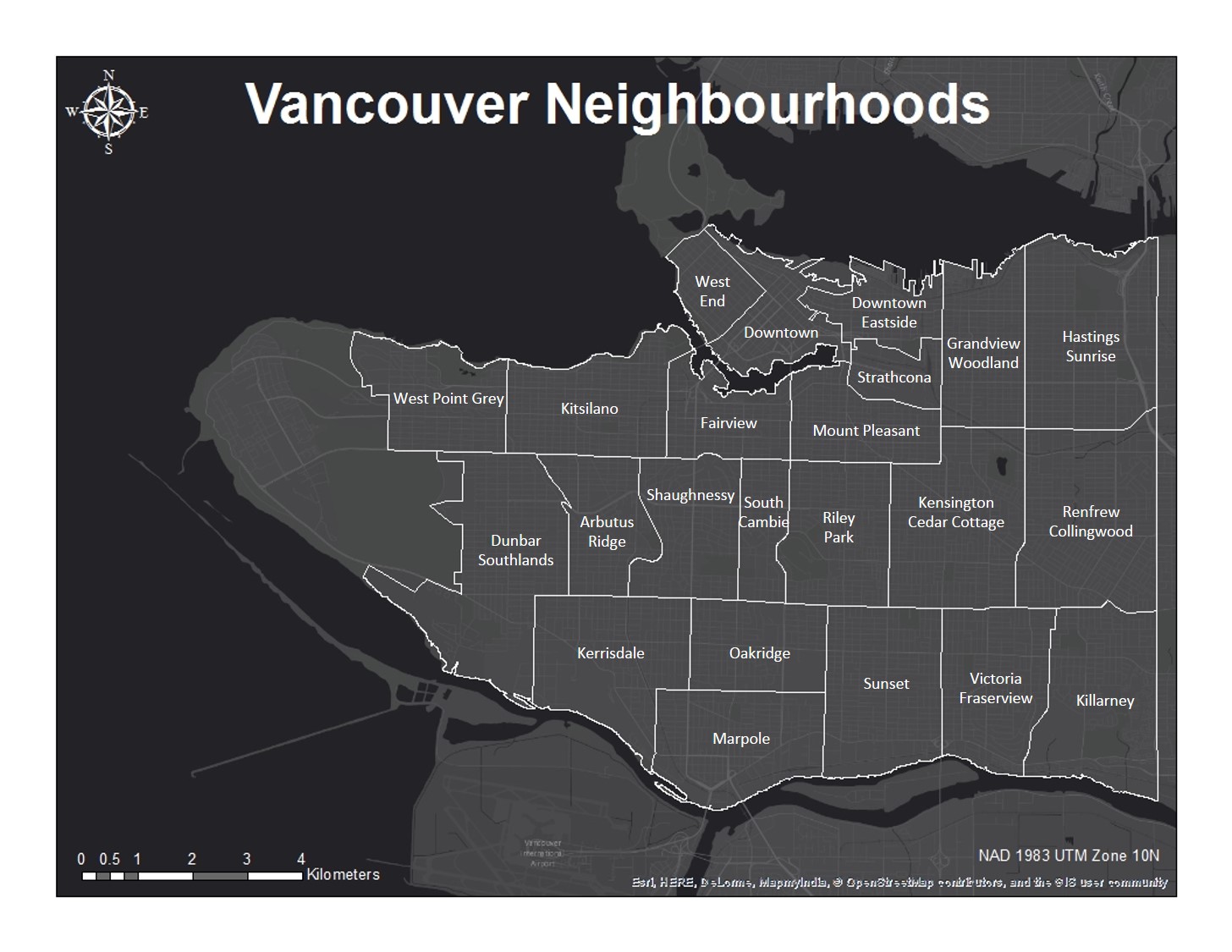Introduction
Project Scope
For the purposes of this project, play spaces were defined as green spaces and public school playground facilities, as there are many different types of play spaces. Due to the time frame of this study and the lack of data on informal play spaces, this study focused on the main public play spaces.
To assess the suitability of play spaces for the provision of risky play, a park audit of physical environment features related to quality of play space for a selected sample was performed using an evaluation checklist based on the 7Cs and affordances research (click here to view the checklist used). These occurred as physical (or in-person) audits through visual inspection, and as digital audits through Google Earth and Google Streetview. A comparison of the two methods was made to assess the validity of the electronic versus in-person site audit, as there are over 200 park spaces in the Vancouver area and using digital methods can save on time and costs of the overall research project.
An interactive web map was also developed to display the outcomes of this project. Such a geovisualization has the “potential for interactive exploratory knowledge production” (Elwood 2010, p. 49), enhancing public knowledge regarding the presence of play deserts and the ways in which they jeopardize child development, as well as fulfilling ‘risky play’ advocacy objectives in community planning discussions.
Study Area
While the clients’ work aims to encompass all of Metro Vancouver, the scope of this project is focused within the City of Vancouver municipality boundaries, and develops a methodology that could be applied to other municipalities in the Metro Vancouver area. The study area is 112.26 km2 of urban landscape, and is made up of 23 designated neighbourhoods ranging in size from 1.98km2 (West End) to 8.58km2 (Dunbar Southlands).
Click the maps below to view larger.

